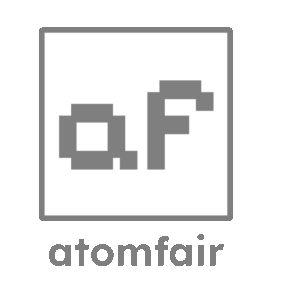Your cart is currently empty!

Atomfair 4-Chloro-3,5-dinitrobenzamide C7H4ClN3O5 CAS 20731-63-9
4-Chloro-3,5-dinitrobenzamide (CAS No. 20731-63-9) is a high-purity nitroaromatic compound with the molecular formula C7H4ClN3O5. This yellow crystalline powder is a versatile intermediate in organic synthesis, particularly in the development of agrochemicals, pharmaceuticals, and specialty chemicals. With a molecular weight of 245.58 g/mol, it features both chloro and nitro functional groups, making it a valuable precursor for nucleophilic substitution and reduction reactions. Our product is rigorously tested for purity (typically ≥95% by HPLC) and is supplied with full analytical documentation, including1H NMR and LC-MS spectra. Suitable for research-scale applications, it is packaged under inert atmosphere in amber glass vials to ensure…
Description
4-Chloro-3,5-dinitrobenzamide (CAS No. 20731-63-9) is a high-purity nitroaromatic compound with the molecular formula C7H4ClN3O5. This yellow crystalline powder is a versatile intermediate in organic synthesis, particularly in the development of agrochemicals, pharmaceuticals, and specialty chemicals. With a molecular weight of 245.58 g/mol, it features both chloro and nitro functional groups, making it a valuable precursor for nucleophilic substitution and reduction reactions. Our product is rigorously tested for purity (typically ≥95% by HPLC) and is supplied with full analytical documentation, including 1H NMR and LC-MS spectra. Suitable for research-scale applications, it is packaged under inert atmosphere in amber glass vials to ensure stability.
Properties
- CAS Number: 20731-63-9
- Complexity: 301
- IUPAC Name: 4-chloro-3,5-dinitro-benzamide
- InChI: InChI=1S/C7H4ClN3O5/c8-6-4(10(13)14)1-3(7(9)12)2-5(6)11(15)16/h1-2H,(H2,9,12)
- InChI Key: XIYABENEBOSULF-UHFFFAOYSA-N
- Exact Mass: 244.9839479
- Molecular Formula: C7H4ClN3O5
- Molecular Weight: 245.58
- SMILES: C1=C(C=C(C(=C1[N+](=O)[O-])Cl)[N+](=O)[O-])C(=O)N
- Topological: 135
- Monoisotopic Mass: 244.9839479
- Synonyms: 4-Chloro-3,5-dinitrobenzamide, 20731-63-9, EINECS 243-998-5, DTXSID70174803, NSC 76582, DTXCID5097294, 243-998-5, Benzamide, 4-chloro-3,5-dinitro-, NSC-76582, C7H4ClN3O5, NSC76582, 4-CHLORO-3,5-DINITROBENZ-AMIDE, WP9P28GYV2, SCHEMBL6570802, STK395738, AKOS005434470, FC70960, CS-0360355, NS00026723, ST50545318
Application
4-Chloro-3,5-dinitrobenzamide serves as a key intermediate in the synthesis of herbicidal compounds, particularly for crop protection agents targeting broadleaf weeds. Researchers utilize its reactive nitro groups for the development of novel sulfonylurea-class herbicides. In medicinal chemistry, it has been explored as a scaffold for antimicrobial agents due to its electrophilic aromatic substitution potential. The compound’s chlorine moiety also enables cross-coupling reactions in catalyst-driven organic transformations.
Safety and Hazards
GHS Hazard Statements
- H317 (100%): May cause an allergic skin reaction [Warning Sensitization, Skin]
Precautionary Statements
- P261, P272, P280, P302+P352, P321, P333+P317, P362+P364, and P501
Hazard Classes and Categories
- Skin Sens. 1 (100%)
If you are interested or have any questions, please contact us at support@atomfair.com
Disclaimer: Sold exclusively for laboratory research. Prohibited for commercial use, diagnostics, or human/animal applications. Buyers assume all compliance liability.
Only logged in customers who have purchased this product may leave a review.
Related products
-
Atomfair (alphaR)-4-Chloro-2-(3-methyl-1H-pyrazol-1-yl)-alpha-(trifluoromethyl)benzenemethanol C12H10ClF3N2O CAS 1033805-26-3
-
Atomfair 1-(2-Bromo-4-fluorophenyl)ethan-1-one 2′-Bromo-4′-fluoroacetophenone C8H6BrFO CAS 1006-39-9
-
Atomfair 1-(2-Bromo-4-methylphenyl)ethan-1-one C9H9BrO CAS 103286-27-7
-
Atomfair 1-(2-Bromo-5-fluorophenyl)ethan-1-one C8H6BrFO CAS 1006-33-3
-
Atomfair 1-(3-Bromo-4-fluorophenyl)ethan-1-one C8H6BrFO CAS 1007-15-4

Reviews
There are no reviews yet.